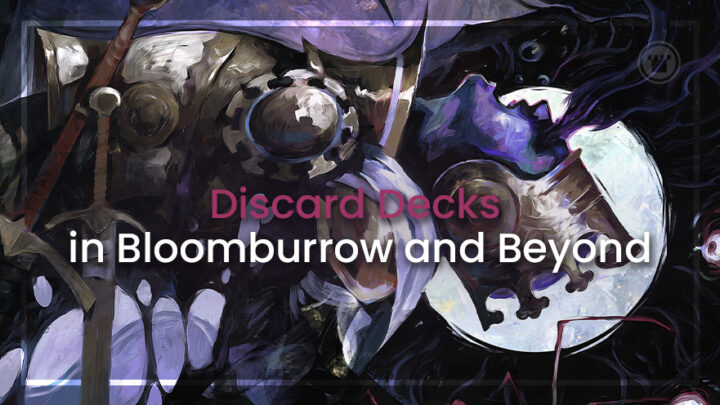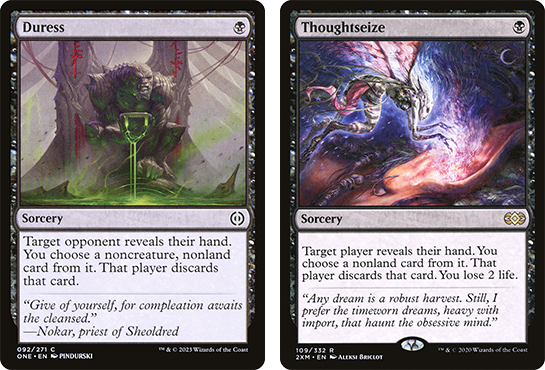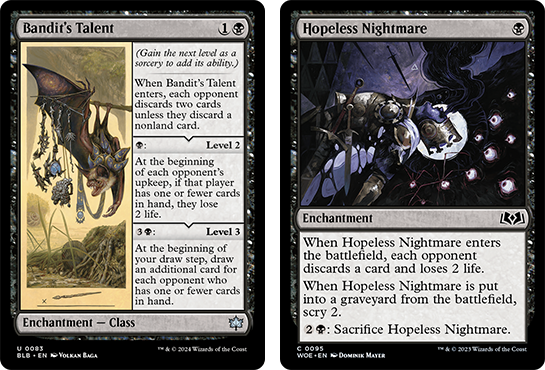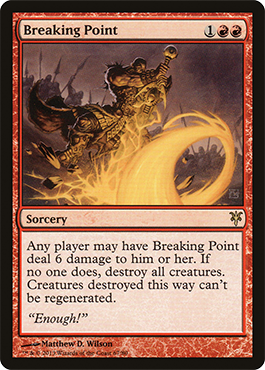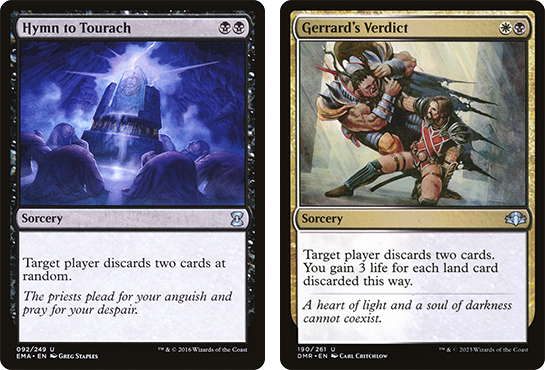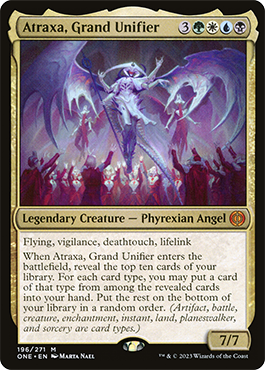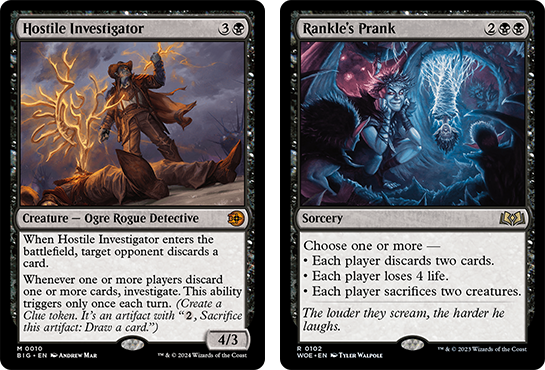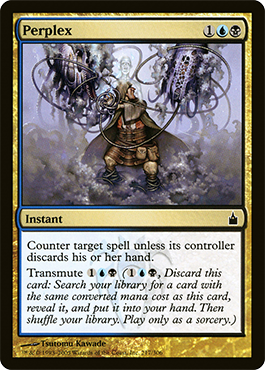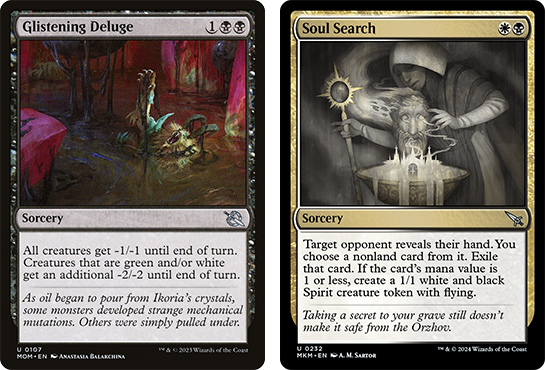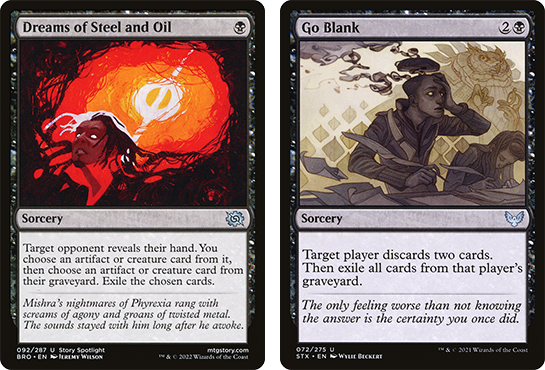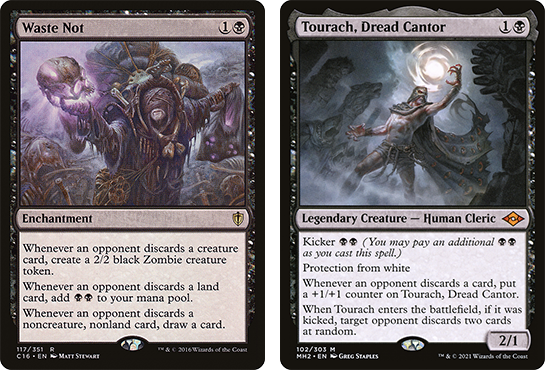Discard effects are essential to the balance of competitive Magic, and to the color identity of black as a whole. Whether it’s Duress, Thoughtseize, Grief, or Inquisition of Kozilek, almost any black decklist will find room for these powerful tools somewhere in their 75.
But as popular as these targeted discard spells have been through the years, they are usually just one tool in a balanced list. It’s a much more rare kind of black deck which wholly embraces discard spells – including non-targeted ones – and the attritional approach to gameplay they encourage. The last few years have seen a sequence of printings and metagame shifts that have brought discard decks back into the spotlight across multiple formats – and even with the recent banning of Grief, they still have plenty of momentum left.
TESTED TO FAILURE
Playing dedicated discard decks is a real mindset shift from most other strategies, including the “usual” use of targeted discard. Almost every other kind of interaction in Magic encourages you to think in terms of lining up specific threats with effective answers. Even a deck like Lantern Control with a highly unique angle of attack depends on seeing what card the opponent is about to draw so they can decide which ones to mill.
But effects like Bandit’s Talent, Go Blank and Liliana of the Veil do not give you the luxury of choosing your targets. Your opponent decides what to discard, both during the resolution and indirectly by deciding which cards to hold back on their turn as fodder for further discard spells. If we assume most opponents will actively avoid discarding their key threats, then our mindset must switch from answering those specific cards to answering the opponent’s gameplan as a whole.
Every deck in Magic is vulnerable to different sequences of bad draws: not enough lands, not enough spells, color screw, no interaction, only finding half your combo, and so on. Discard does the same thing to opposing decks as crash testing does to a car: subject it to massive additional strain across every area until something fails (and hurts the dummy piloting it).
You may not be able to literally select which cards are going to the graveyard with each discard spell, but by paying attention to what cards your opponent keeps and what they give up, you can try and time your punches to cut off their decisions and paralyze even the most powerful Constructed decks.
YOU CAN NEVER DISCARD EVERYTHING
In a vacuum, it’s not hard to see the theoretical justification for playing discard spells. You can typically pay one mana to trade a card for their best card in hand, or three mana to trade one card for their two worst cards. In some situations the rate can be even better than that!
You can even pay a little extra to gain a small creature body on top of the exchange, or some other kind of permanent advantage. All of these sound exceptional on rate, so why aren’t more decks maxing out on hand attack? The biggest reason is just that – you are spending mana to trade for cards from their hand; cards they haven’t invested mana in casting. Meanwhile, in most situations, the opponent will be casting whatever they didn’t discard and building a lead on board which you’ll then need to respond to, taking the pressure back off their hand.
It’s the same reason that mechanics like mill and lifegain are so rarely successful as a dedicated strategy. Discard fares a little better, but only if you can play so much of it that it does start to leave the opponent without good plays on their turn. Even then, as the saying goes, “you can’t Thoughtseize the top of their deck”. Once your opponent finds enough lands, all it takes is one lucky draw step and all your hard work could be undone.
Instant speed discard like Kolaghan’s Command can occasionally help you combat this threat, since it can immediately snipe a new-drawn card before you leave the draw step. But those effects are too rare to lock opponents out for long. Thus, even the most hand-hating of decks need to present a clock to stifle the threat of opposing comebacks.
They also need to have enough removal to take care of whatever early spells and later topdecks slip through the net and into play. This is especially crucial given the tendency of modern threats to also generate card advantage of their own. It’s the printing of new support cards which can cover these crucial areas of need which has triggered the discard deck renaissance, more so even than the quality of discard spells themselves.
Yes, having Liliana of the Veil and Deep-Cavern Bat in Standard together is very powerful. But it’s cards like Bandit’s Talent, Hostile Investigator, Rankle’s Prank and Aclazotz, Deepest Betrayal – cards which exert pressure on the opponent’s life total and boardstate – which are most important. Between these threats and more complicated kinds of value engine, discard decks are able to successfully leverage an uneven war of attrition and tempo: drawing enough cheap spells to continuously trade for and neutralise the opponent’s draws, while also grinding steadily towards a more permanent victory.
MAKE THE READS TO MAKE THEM BLEED
There’s a tendency to think of blue permission decks as the most cerebral of Magic strategies, but I think that black discard decks are an even better fit for players who like to outwit their foes. After all, your targeted discard gives you unparalleled information to work with regarding your opponent’s hand – but you don’t have the luxury of simply vetoing the mana they spend each turn by countering spells on the stack.
Making effective use of discard spells means sequencing and timing your strikes to leverage that information advantage. A single discard effect will rarely inflict devastating damage, unless your opponent doesn’t know the worth of their own cards. But if you can second-guess their priorities from that first choice, you can try and follow up in a way which disrupts them.
If you ever see someone discard two lands to Bandit’s Talent in the early game, it’s a great time to follow up with targeted discard – whatever non-lands they hold are clearly worth protecting. Or if you’re post-board against an aggro deck and you keep a hand with Glistening Deluge, you might as well save your non-targeted discard until after you soak up their cheap spells on turn three.
That’s in stark contrast to your game one plan, where you’d normally expect to be throwing down discard as fast as possible to get some trade while it’s relevant. Or even to your plan against decks with powerful two-card engines, where you need to try and put them on the fastest clock you can early, and then time your discard spells to keep them stuck on (at most) half a combo.
Graveyard decks in particular create an engrossing standoff, since it can be terrifying to risk accidentally accelerating your opponent’s plan – but if you have at least some tech to target the yard, you can also force them to keep their own sequencing a lot tighter than they might be used to!
THIS DIS DON’T MISS
There are very few decks which are forced to be so adaptive and reactive to the opposing deck and the current game state as these ones – and for some kinds of Magic player, that’s a positive! I truly love trying to stay a step ahead of my opponent’s thinking… and their topdeck luck.
With the influx of great tools to help you cover some problem matchups, and diverse threats to complicate opposing decision making, there has rarely been a better time to go all-in on discard in Constructed. Black in Standard can pair with literally any second color and post results, while Waste Not has finally ascended to genuine meta deck over in Pioneer.
Modern and Legacy will take some time to rebound and regroup from the Grief ban, but the card advantage of Necrodominance seems extremely powerful in a shell which can use those draws to grind away opposing hands for minimal mana cost. Even Commander players can get in on the act thanks to legends like Tergrid, Tourach, Nebuchadnezzar and Tinybones.
I think every player should take a chance at some point to experience this unique brand of Magic – so why not make it now?

Tom’s fate was sealed in 7th grade when his friend lent him a pile of commons to play Magic. He quickly picked up Boros and Orzhov decks in Ravnica block and has remained a staunch white magician ever since. A fan of all Constructed formats, he enjoys studying the history of the tournament meta. He specializes in midrange decks, especially Death & Taxes and Martyr Proc. One day, he swears he will win an MCQ with Evershrike. Ask him how at @AWanderingBard, or watch him stream Magic at twitch.tv/TheWanderingBard.

